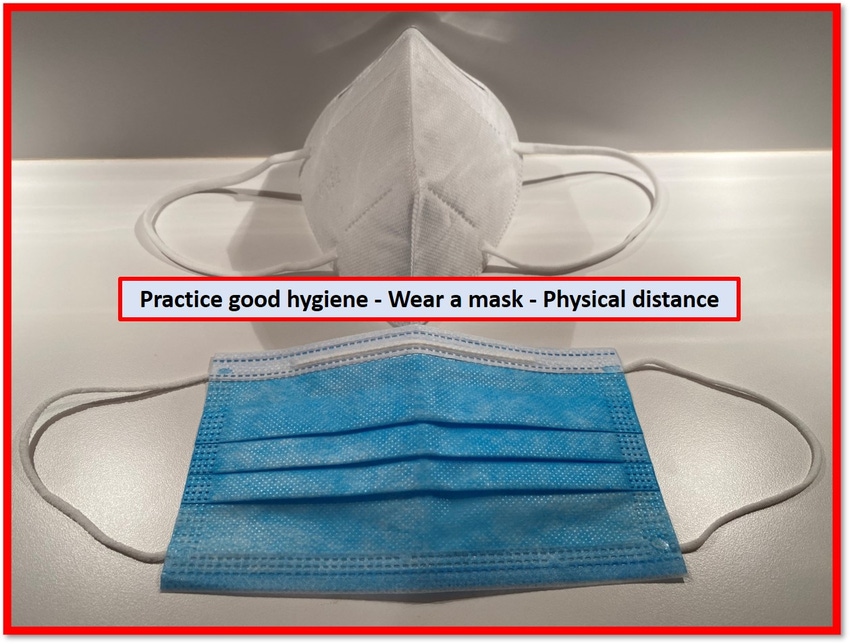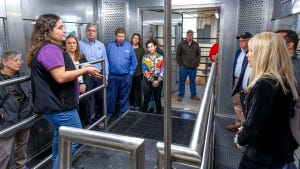From just-in-time to just-in-case to just-in-need
December 31, 2020

2020 will go down as a historical year for our globally interconnected world in part due to the COVID-19 disease pandemic (the severe acute respiratory syndrome coronavirus 2, or SARS-CoV-2). In this historical period as 2020 closes hindsight is important for learning and foresight is important for planning. Globally 7.75 billion people are more connected than ever through global travel, trade, and information networks. The traditional barriers of connectivity – mountains, oceans, and distance -- have vanished with modern transportation modes. Communication gaps have evaporated with the internet and mobile technology.
In 2020, nature has demonstrated through COVID-19 that it remains all powerful and that diseases and pathogens are adaptive – the basic biology of survival of the fittest. Travel and trade, along with integrated global networks and systems, can provide for the accelerated transfer of risks. Thus, 2020 has highlighted the need to identify risks more rapidly, specifically the highest public health and food security risks, and the need to accelerate scientific-based understanding to track, to intervene, to eliminate, or to minimize the risks. Such is only possible through collaboration via a coordinated government sector and private sector ‘One Health’ approach.
Just-in-time: Hindsight recognizes the amazing global efficiencies of our business models built over the past decades. Innovation has yielded phenomenal production efficiencies in food animal production and plant production. Tremendous strides have been made in sustainability, including economically, environmentally, and socially. Globally food systems and sourcing have provided for just-in-time supply and production chains. The just-in-time philosophy and practices have provided for an amazing array of fresh nutritious food that is affordable and abundant for most globally.
Just-in-case: Hindsight also profiles risks in our global systems. Just-in-case became part of global supply chain calculations due to unknowns. A new virus necessitated risk management steps without full scientific understanding. The government sector and private sector needed to rapidly understand evolving scientific learnings. Our global systems needed to adjust to supply chain logistic interruptions. Governments needed to take actions to protect public health through border controls. The more vulnerable parts of the system yielded cracks and gaps that increased food insecurity and eliminated jobs and decreased incomes. Just-in-case which includes more supply chain diversification has now been integrated into many business planning models to reduce system risks.
Critically, hindsight also recognizes that we are extremely fortunate COVID-19 is not a food safety issue. COVID-19 is a zoonotic and a transboundary disease and the principal mode of infection for SARS-CoV-2 is through exposure to respiratory droplets carrying the infectious virus. Precautions and actions needed to be taken and have been taken via our food safety systems through intervention methods, to protect food chain workers, to minimize the nominal risk from surface contamination, and to eliminate the extremely remote risk of transfer on packaging. Risk assessment, risk management, and risk communication are all critical steps for action as scientific understanding evolves and interventions are implemented.
Just-in-need: Foresight is important for planning as we learn from hindsight and recognize ongoing needs. Foresight highlights just-in-need areas of scientific understanding, testing clarification, contexts of numbers, and messaging and communication.
Scientific understanding: Now about one year into the COVID-19 pandemic there has been amazing scientific knowledge of and progress regarding the virus. SARS-CoV-2 is a single-stranded RNA virus, and its entire genetic sequence was uploaded to the Global Initiative on Sharing All Influenza Data (GISAID) platform on January 10, 2020. Therapeutic interventions and vaccines have been approved in record times all while ensuring scientific scrutiny and integrity. Yet we need to recognize our full scientific understanding is still evolving regarding original source epidemiology, transmission efficiency and pathways, and infectious dose. Further databases globally of bacteria and viruses are helpful, yet there appears to be a major gap in our ability to identify and predict those with greatest zoonotic risks. Foresight emphasizes the need for accelerating scientific understanding toward identification, routes of transmission, and interventions for future risks.
Testing clarification: There are two kinds of tests, a viral test that tells if you have an infection and antibody test that might tell if you had an infection. Viral tests include polymerase chain reaction (PCR) tests that look for the genetic material of the virus and antigen tests that look for the proteins. The antibody test looks for an individual’s immune system’s response to the virus. There are hundreds of testing methods used globally for different purposes, including for detection, with varying limits of detection and limits of quantification, varying degrees of speed, and varying measures of sensitivity (number of true positives) and specificity (number of true negatives). The RT-PCR (Reverse Transcription-Polymerase Chain Reaction) is considered the gold standard for identification of the SARS-CoV-2 virus. As one looks to testing, one needs to be cautious in interpreting a test as a finding of genetic material does not necessarily indicate the presence of a live virus or of an infectious dose of the virus. Governments and all food chain stakeholders need to be willing to actively share testing methods and findings to understand actual risks and then determine appropriate actions.
Context of numbers: Globally we are in need for context around numbers for ‘confirmed cases’ and ‘deaths’. No country has a full accounting of cases or deaths. Capability for and capacity of testing heavily impact these numbers, and thus numbers reflect the extent of and capacity for testing and reporting for which there are limitations globally. More recently antibody testing in populations indicates broader prevalence of cases, often many times over historically reported cases in a country.
Messaging and communication: Explaining something that is new and a risk and not fully understood scientifically is challenging and necessitates transparency in acknowledging what we know and what we are still seeking to learn. Further evolution of knowledge needs to be explained through evolution of messages. Core messages of “Practice good hygiene - Wear a mask - Physical distance” are key to encouraging actions proper by all. Yet we still need better clarity on messaging, and we need to use terminology as physical distancing, rather than social distancing, as we should be physically distanced while being socially engaged. Also, is it one meter (WHO) or six feet (U.S. CDC)? Message refinement and consistency of along with proper communication need further work as we go forward.
2020 is now headed for the history books recognizing the need for coordinated global efforts whether at the local, national, regional, or global level; recognizing the need for collaborative government and private sector partnerships; recognizing the roles of international intergovernmental organizations, such as WHO (World Health Organization), FAO (Food & Agriculture Organization), OIE (World Organization for Animal Health), and WTO (World Trade Organization); and recognizing the need for a ‘One Health’ mindset!
Perspective: As we end 2020 with hindsight and foresight, in the spirit of the season, yes times were challenging in 2020, but yet we are fortunate as one ponders our individual realities in a global context:
We are blessed with family and friends and customers both near and afar …
Blessed with the basics of life – food, shelter, clothing, electricity, and running water …
Blessed with scientific innovation – in areas of food animals, plants, health, and nutrition …
Blessed with the luxuries of life – computers, mobile phones, internet, cars, and planes …
Blessed that we can connect via telephone, FaceTime, Line, WhatsApp, and Messenger …
Blessed we can stay abreast via Facebook and LinkedIn …
Blessed we can conduct business via Zoom, Teams, and Skype …
Blessed that farmers and the total global food supply chain can resiliently provide for most all …
Blessed with a purpose in providing the most basics of life – food and essential nutrition …
Yes – truly blessed we are – though challenging times we see!
About the Author(s)
You May Also Like



.png?width=300&auto=webp&quality=80&disable=upscale)

